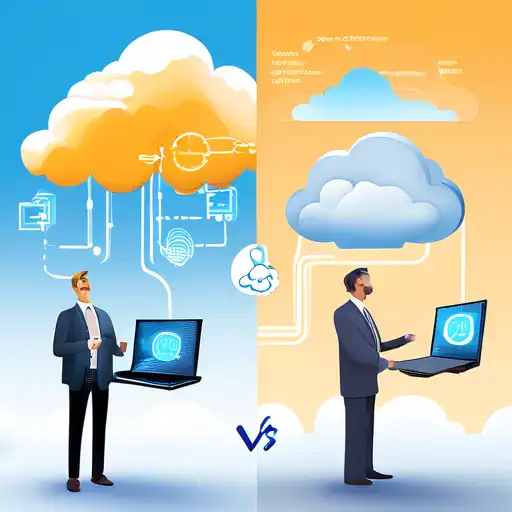Introduction to Edge and Cloud Computing
In the rapidly evolving world of technology, understanding the differences between edge computing and cloud computing is crucial for businesses and individuals alike. Both technologies play pivotal roles in data processing and storage, but they cater to different needs and scenarios.
What is Cloud Computing?
Cloud computing is a technology that allows for the delivery of computing services—including servers, storage, databases, networking, software, analytics, and intelligence—over the Internet ('the cloud') to offer faster innovation, flexible resources, and economies of scale. Users typically pay only for the cloud services they use, helping lower operating costs, run infrastructure more efficiently, and scale as their business needs change.
What is Edge Computing?
Edge computing, on the other hand, is a distributed computing paradigm that brings computation and data storage closer to the location where it is needed to improve response times and save bandwidth. The goal of edge computing is to process data near the edge of your network, where the data is being generated, instead of in a centralized data-processing warehouse.
Key Differences Between Edge and Cloud Computing
While both edge and cloud computing are about processing data, they differ significantly in how they handle it. Here are some key differences:
- Location of Data Processing: Cloud computing processes data in centralized data centers, whereas edge computing processes data locally or on nearby servers.
- Latency: Edge computing significantly reduces latency because data doesn't have to travel as far as it does with cloud computing.
- Bandwidth Usage: By processing data locally, edge computing reduces the amount of data that needs to be sent to the cloud, saving bandwidth.
- Security: Edge computing can offer enhanced security for sensitive data by keeping it closer to its source and reducing exposure to potential threats during transmission.
Choosing Between Edge and Cloud Computing
The choice between edge and cloud computing depends on the specific needs of a business or application. Cloud computing is ideal for applications that require the processing of large amounts of data without the need for real-time analysis. Edge computing is better suited for applications that require real-time processing and analysis, such as autonomous vehicles, smart cities, and IoT devices.
Future Trends
As technology continues to advance, the line between edge and cloud computing may blur, with hybrid models becoming more prevalent. These models will leverage the strengths of both technologies to provide more efficient, scalable, and flexible computing solutions.
For more insights into how these technologies are shaping the future, check out our articles on technology trends and data processing.
Conclusion
Edge computing and cloud computing are not mutually exclusive but are complementary technologies that serve different purposes. Understanding their key differences is essential for making informed decisions about which technology or combination of technologies is best suited for your needs. As the digital landscape evolves, staying informed about these technologies will be crucial for leveraging their full potential.
